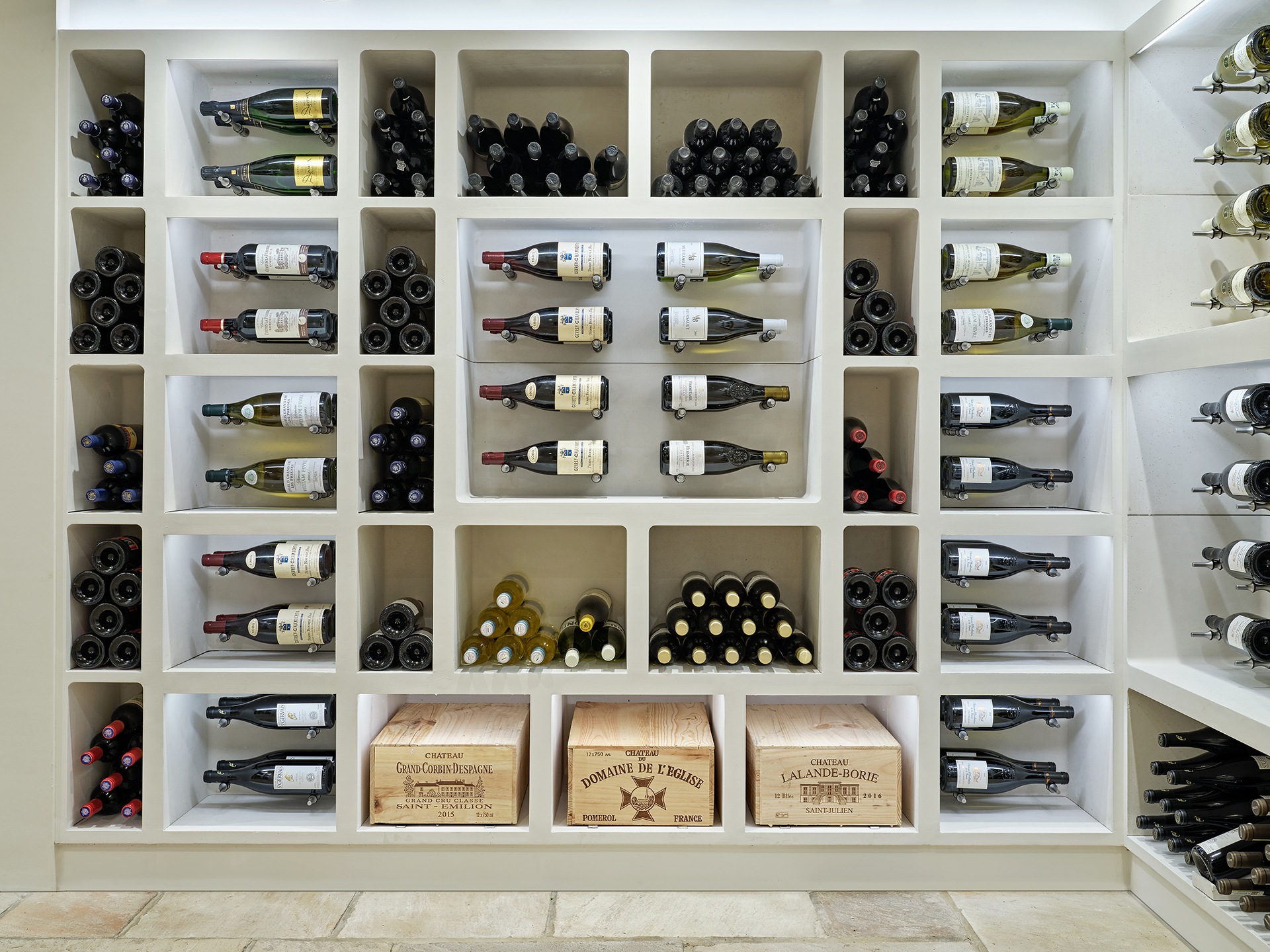Create your own wine cellar
We’ve got everything you need to know to create a wine cellar or wine room in your home
If you’re an oenophile, perhaps you’ve dreamed of building your own wine cellar in which to store and expand your own collection of fine wines (and, let’s be honest, less fine but very quaffable ones, too). Well, here’s how you go about it.
Temperature, humidity and light
The key things you need to control when making a wine cellar, wine room or any other wine storage area are: temperature, humidity and light. Richard Lane, an Educator from the Wine and Spirit Education Trust (WSET), which offers courses and qualifications in wines and spirits, explains, “A cool, constant temperature (ideally 13-15°C) away from direct sunlight is ideal.
“The best way of ensuring this is to use a basement or cellar – but, of course, this is not always possible. Avoiding direct sunlight is important as the ultraviolet light from sunlight can interact with wine components and cause faults. In general, a wine would lose its primary fruitiness rapidly if exposed to sunlight.
“Maintaining constant temperatures for wines is important. Even if the desired 13-15°C range cannot be achieved, then avoiding sharp temperature swings, from central heating systems for example, is essential.”
If the wine is stored in temperatures that are too hot, it ages too fast and. Being too cold slows down the ageing process. And, if it were to get very cold, of course, your wine could freeze.
Humidity, meanwhile, needs to be between 50 and 70% to prevent corks drying out and shrinking, which can lead to oxidisation (spoiling) of the wine.
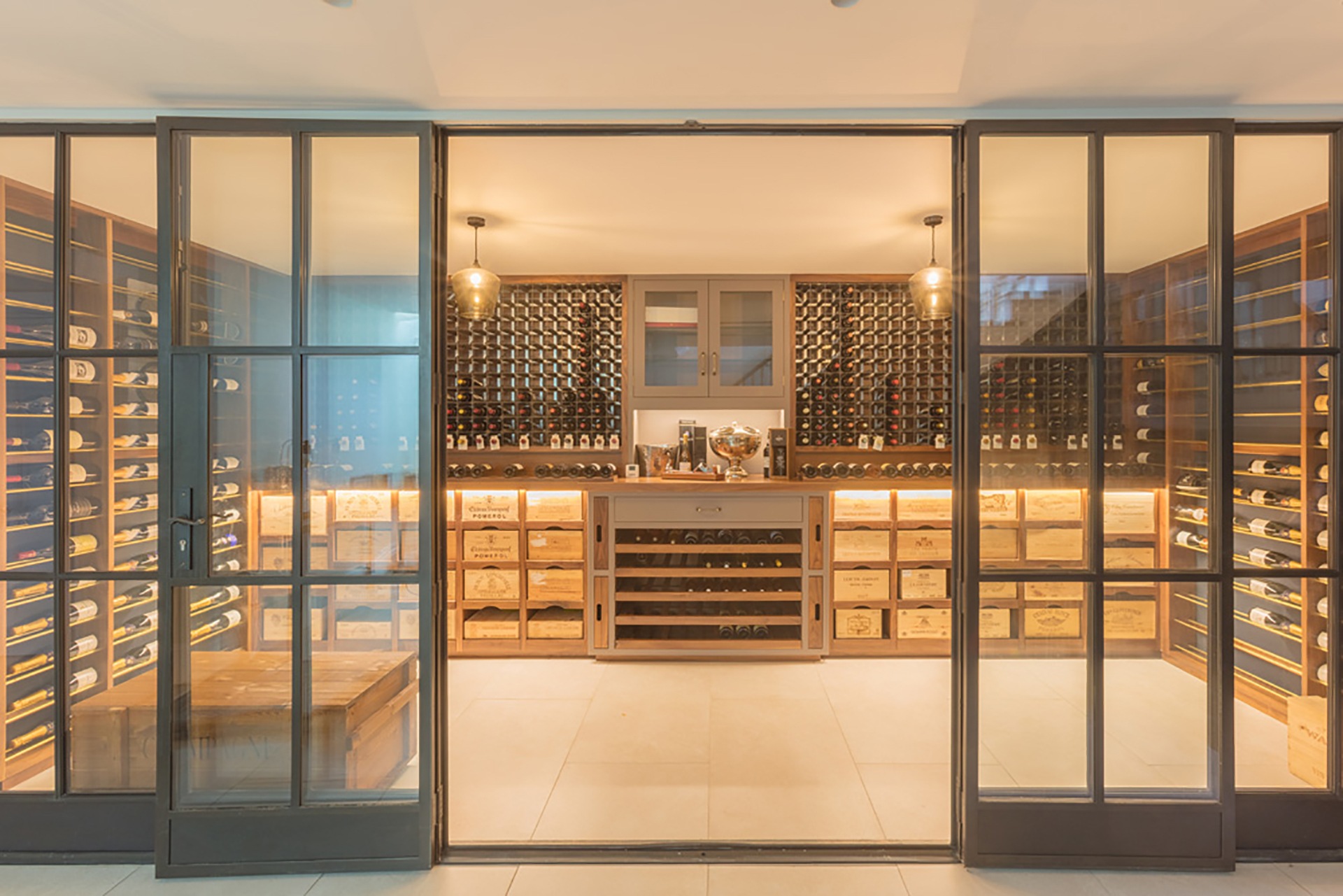
Image credit: Architectural Bronze Casements
Sideways
The thinking behind the traditional way of storing wine bottles on their sides, is that having wine up against the corks will stop them drying out. Dried corks can shrink, allowing in air, which can oxidise the wine and spoil it. If you’re not planning on keeping the wine for long, or it has a modern stopper – screw-top or plastic ‘cork’ – it doesn’t really matter. But you may wish to keep all your bottles in the same horizontal position, nonetheless.
Keep it dark
UV light is also bad for wine. (Why do you think it comes in dark-coloured glass bottles?) Whatever storage solution you come up with, you need to minimise the wine’s exposure to UV light, whether by keeping your cellar dark most of the time, keeping the wine behind solid doors, or UV resistant glass.

Image credit: Spiral Cellars
Where works?
When thinking about where to store your wine, it makes sense to pick somewhere where the conditions are already close to the ones you are trying to achieve. That means use your cellar if you have one, and avoid anywhere liable to frequent and large temperature fluctuations, such as the kitchen or garden shed.
There are several choices when it comes to wine storage. At the top end of the price range, you can buy an off-the-peg or bespoke wine room or cellar from a specialist company such as Spiral Cellars. The same companies also sell less pricey, smaller storage options, such as ‘wine walls’.
A non-specialist company, say, a kitchen or conservatory designer, could design and build you a bespoke space. For a more modest budget you can create a DIY climate-controlled storage area, maybe under the stairs, in a pantry or existing cellar.
The most budget-friendly solution, unless you have, or are planning to build up, a large collection of good wines, could be just to invest in a good wine fridge.
We’ll look at each of these solutions in turn.
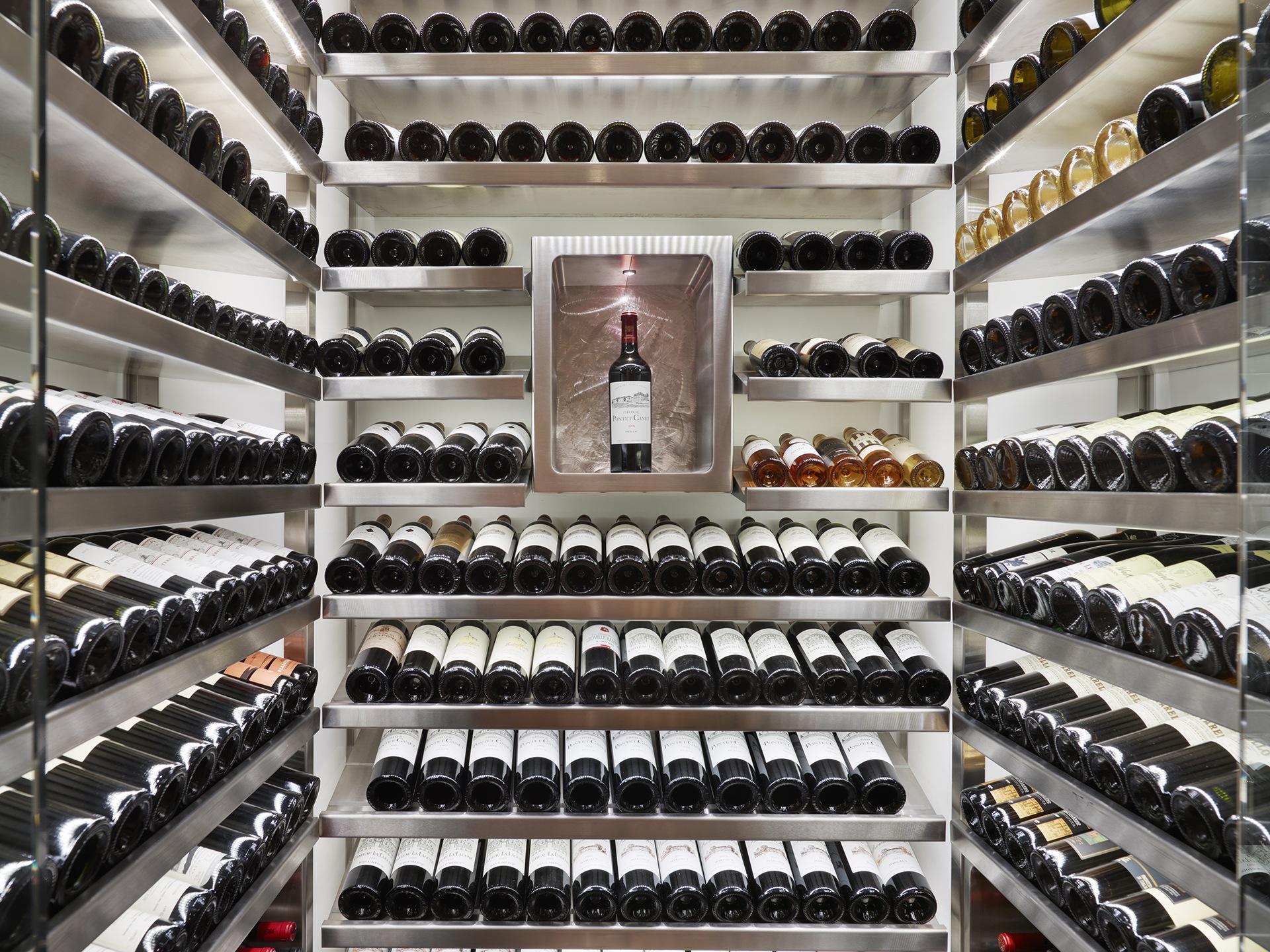
Image credit: Spiral Cellars
High-end solutions
If you want the best of the best, you will want to look at professional-standard wine-storage solutions such as those from Spiral Cellars and similar companies. These come with a high price but are the best choice, particularly for anyone with a large and expensive collection. A bespoke climate-controlled wine room could include beautifully designed display shelving with custom lighting to show off your most prestigious bottles, oak cabinetry, brass fixtures and fittings, space for 1000 bottles; room for you and your friends to sit and sample your best vintages; a custom humidor for the full Sopranos vibe.
Basically, if you can think of it – and pay for it – you can have it, created by specialist craftsmen, Masters of Wine, and engineers, for a cost of tens of thousands of pounds.
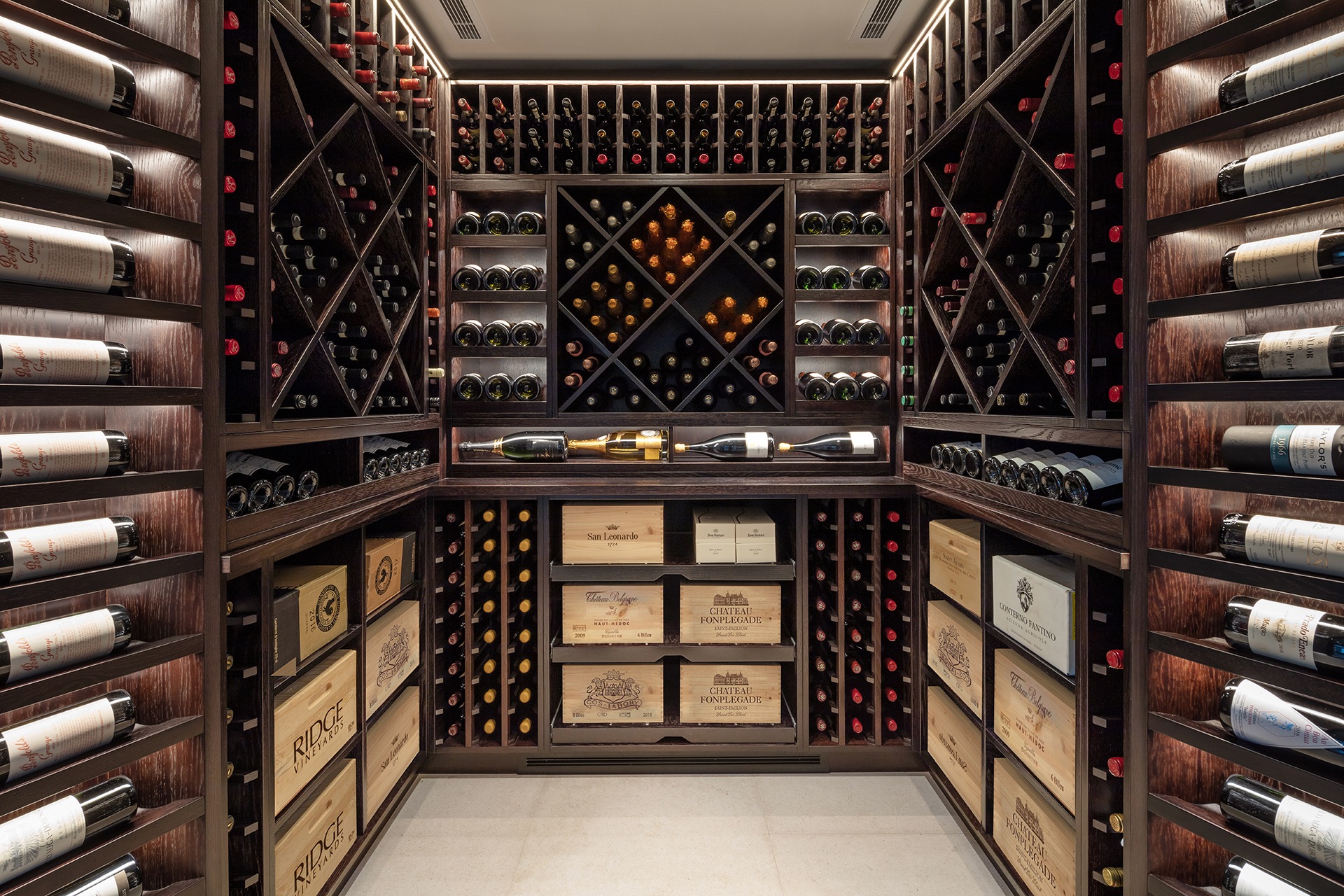
Image credit: Spiral Cellars
If you don’t have the space for a full-on walk-in wine room, one (literally) cool option is the spiral cellars that gave Spiral Cellars its name. These circular cellars house bottles around the edge of a tubular cellar with a spiral access staircase in the middle. Made from concrete, they can be put under any ground-floor room.
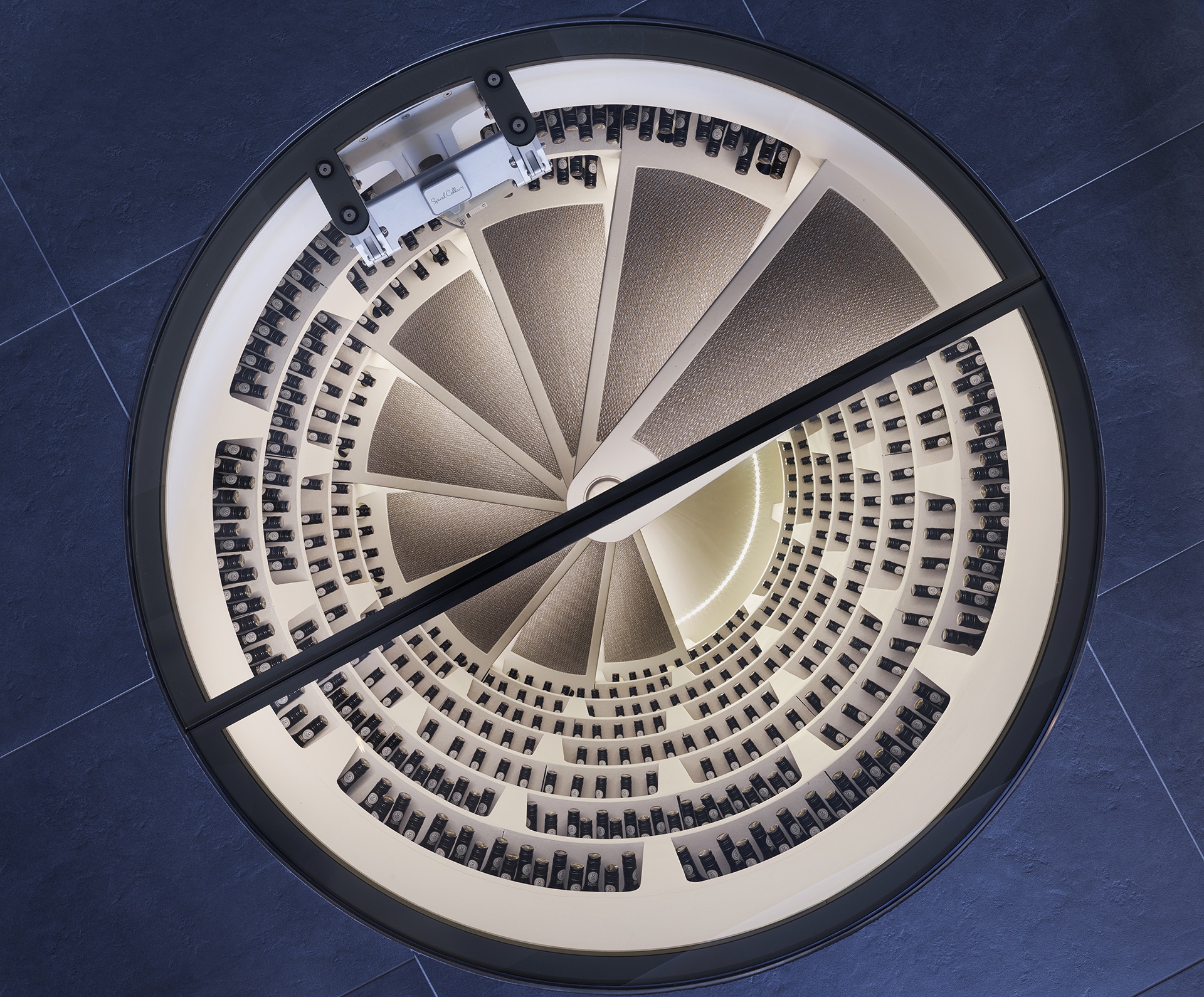
Image credit: Spiral Cellars
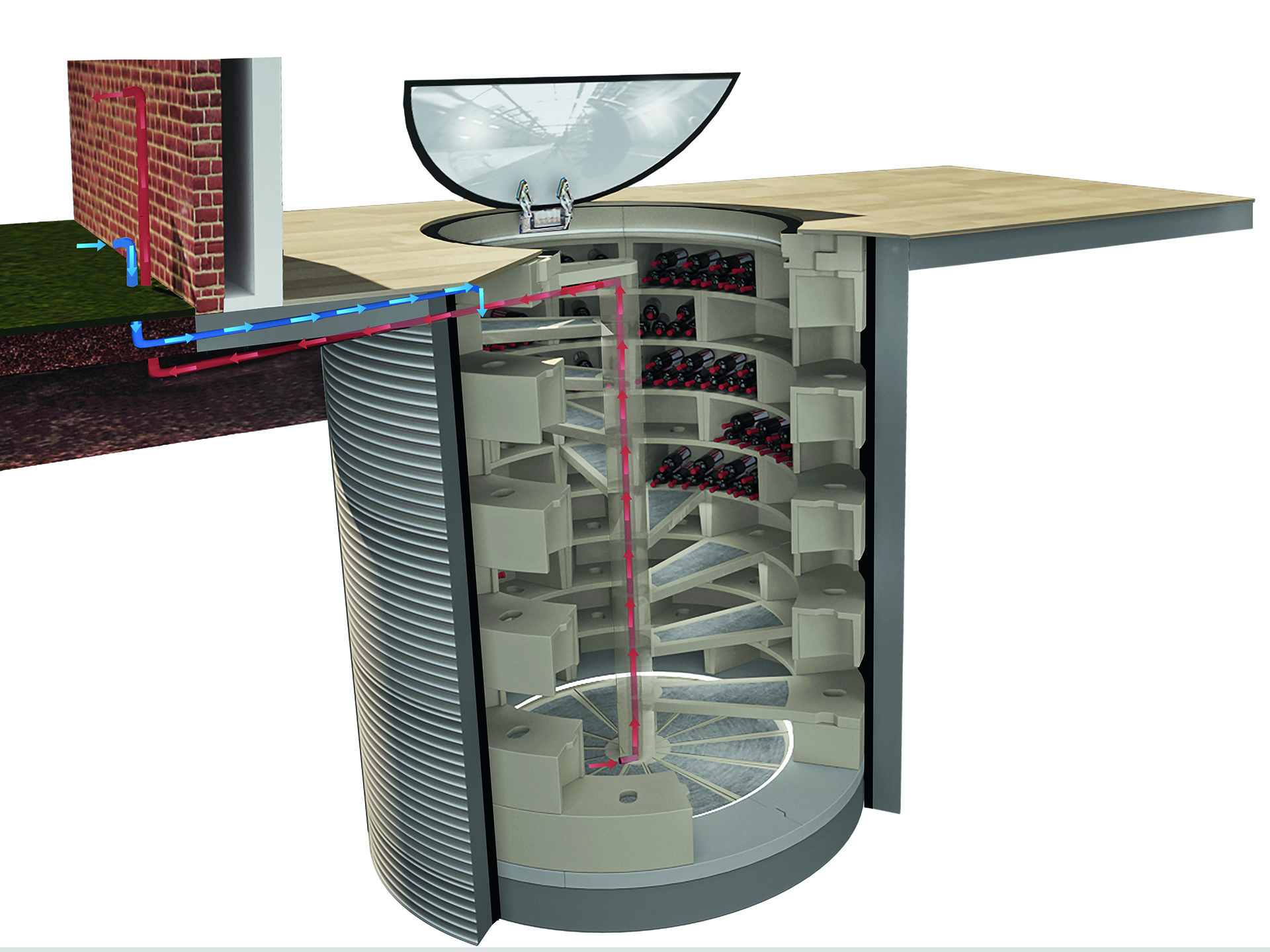
Mid-budget choices
If you’re working with a more moderate budget, you can buy a smaller set-up from one of the specialist retailers: a ‘wine wall’, perhaps, or similar to go in a garage, under the stairs or in a utility room. Or ask a non-specialist company to insulate and fit out a space.
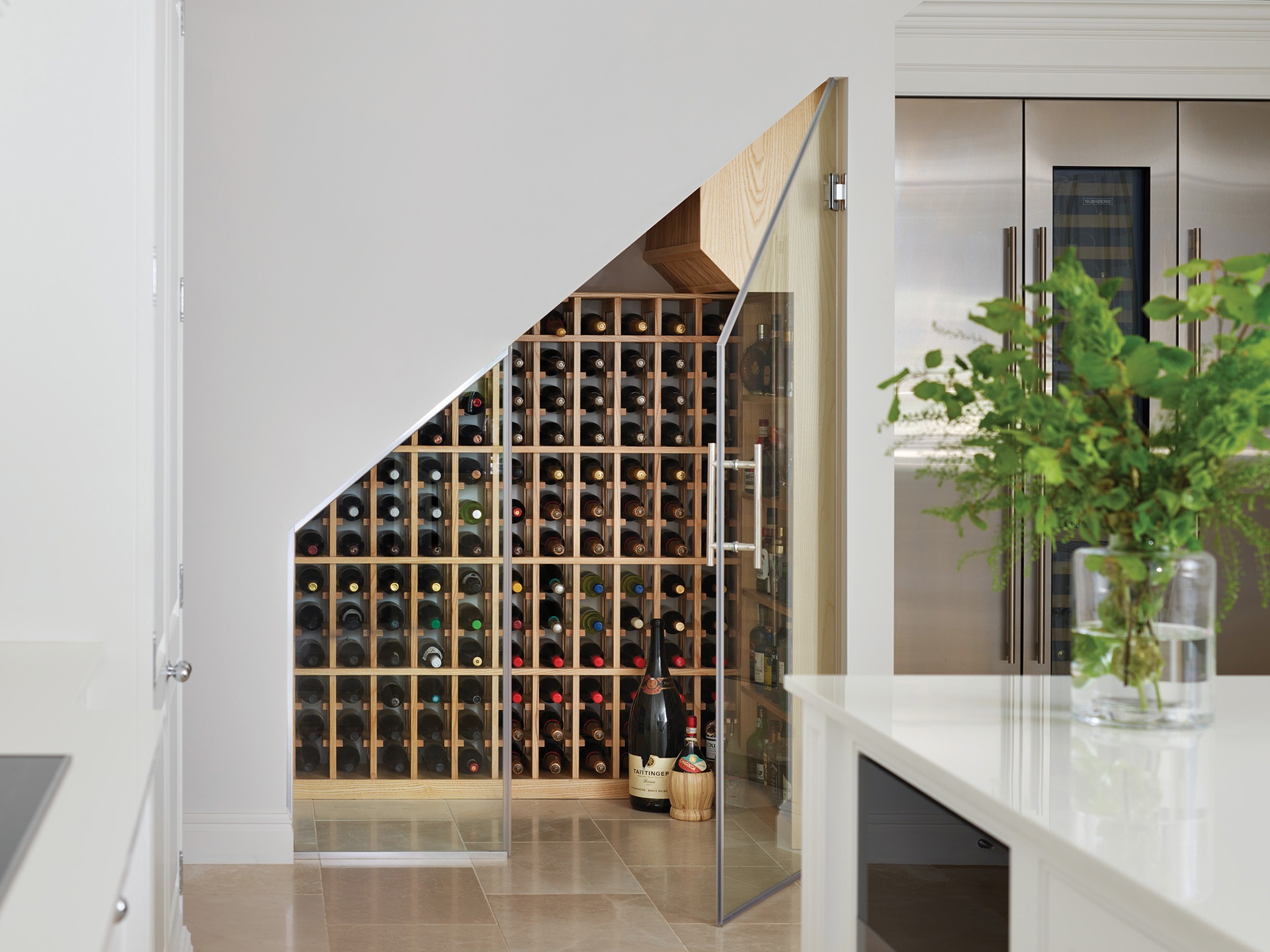
Image credit: Tom Howley
DIY cellars
Alternatively, you can build a wine room as a project yourself. You could just install wine racks and shelving, and perhaps a wine cooler, and not bother with climate control: ie stick with ambient storage. If the wine you drink isn’t that expensive and you tend to drink it soon after buying it, then that ambient storage is just fine.
But, if you want to create a climate-controlled space for more expensive wines, remember the key things you need to control are humidity, temperature and light. So, essentially, you need to make a sealed ‘box’ within which you can control all these elements. First, frame out and box in the chosen space, then you’ll need to insulate it well.
Next, you will need to install a specialist wine-cellar conditioning system. These can be bought from companies such as Elite Wine Refrigeration and Heron Hill. Systems need to be vented by means of ducting. You can get systems that just cool, others that will heat the air in the room if the temperature falls too low. Look out for energy-efficient models ( A++ or A+++ rated) that operate quietly and with a high coefficient of performance (CoP). Some also work as humidifiers to keep the air at the right level of humidity. There are portable and fixed conditioners, rated according to the size of the (well insulated) cellar they will keep cool.
The definitive guide to how to build your own cellar, still worth consulting, is How and Why to Build a Wine Cellar by Richard M Gold. Companies like Spiral Cellar offer elements like wine storage bins and wine bottle display pegs that you can put together to finish off your perfect set-up.
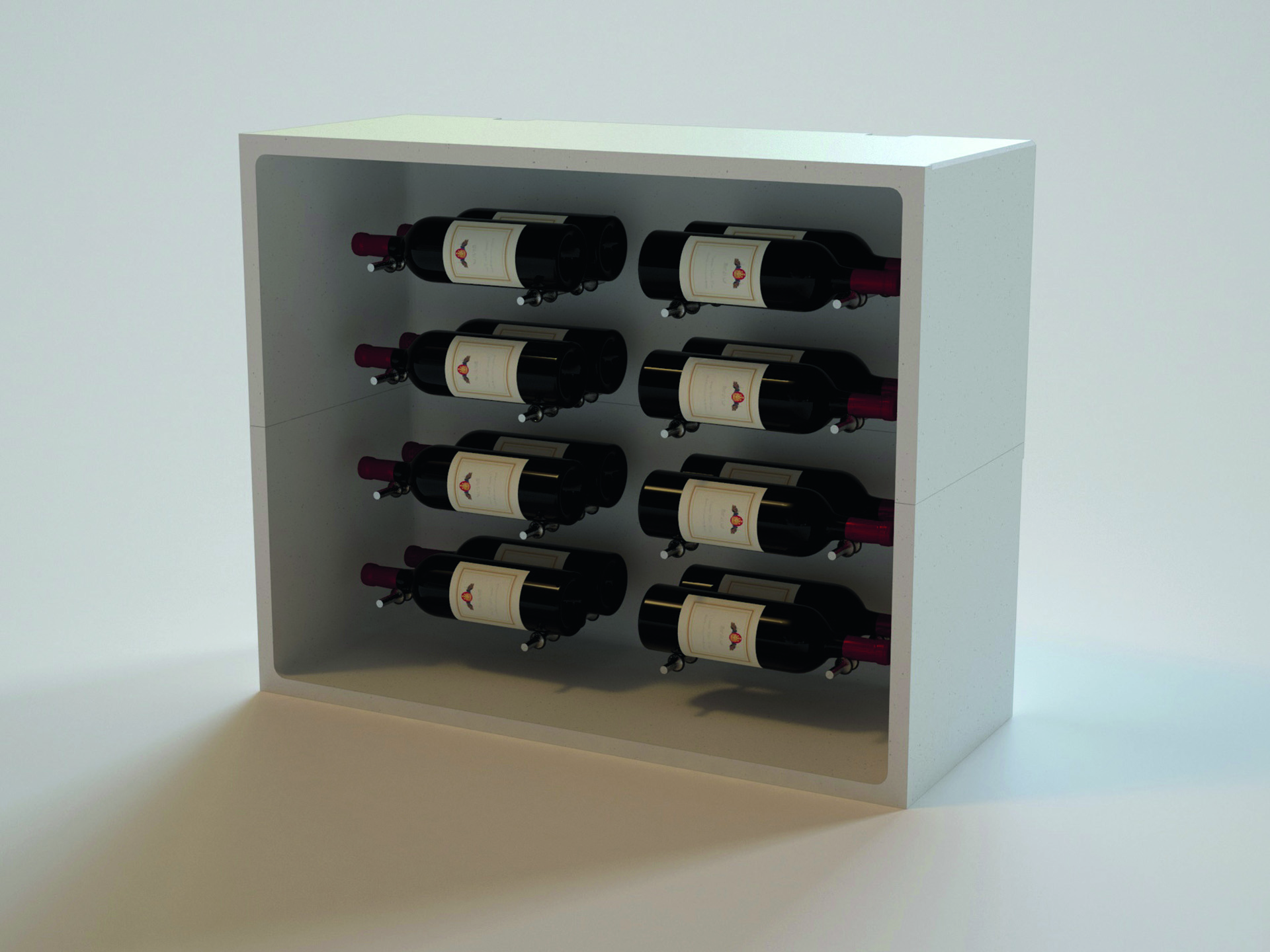
Image credit: Spiral Cellars
If you want to upgrade the cellar of your house to store wine, meanwhile, you’ll need to get a survey of the existing space first. And, if the space isn’t big enough, you might need to get quotes for underpinning and excavating. Even if the existing space is big enough, it will need to be waterproofed and ventilated.
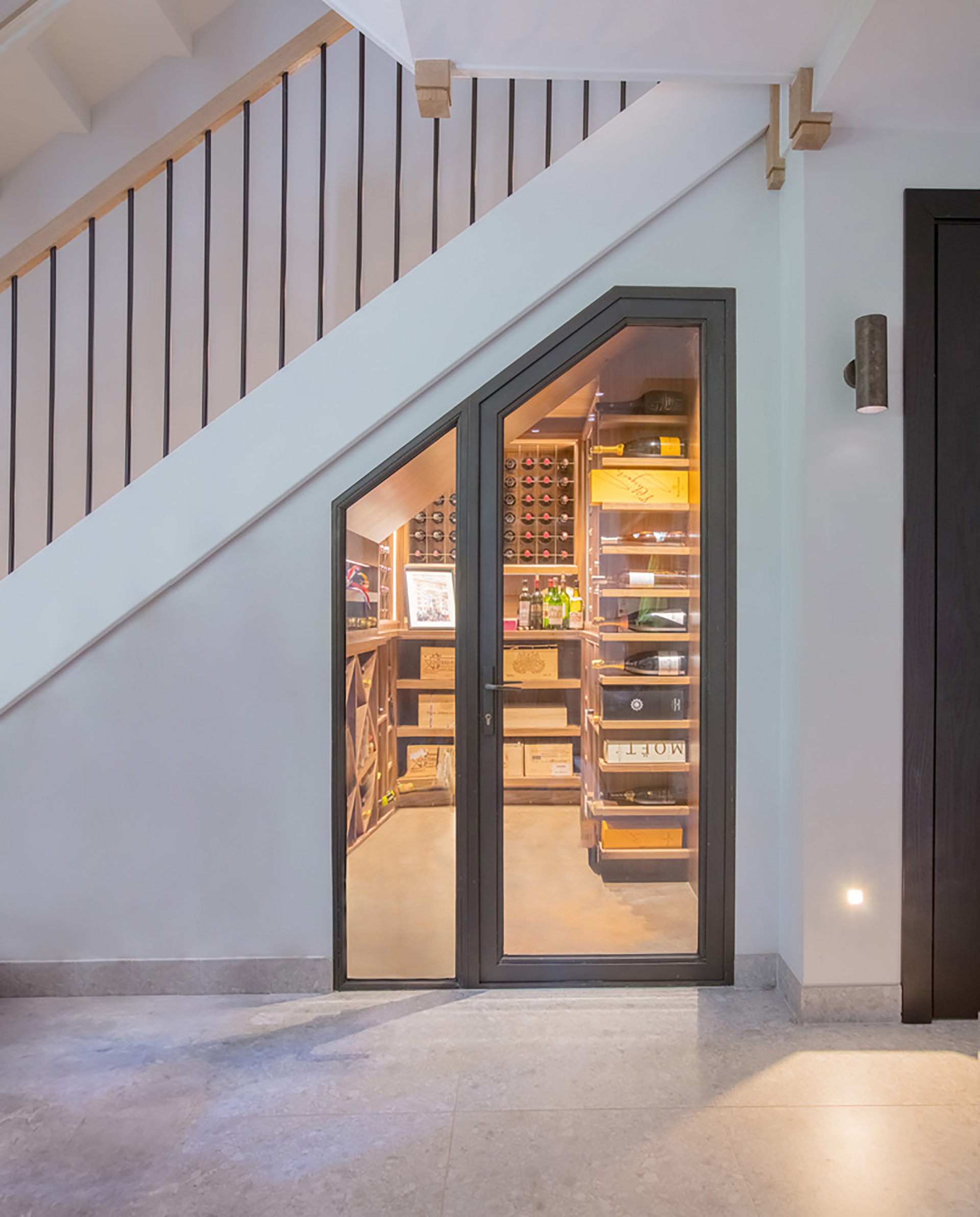
Image credit: Architectural Bronze Casements
Maintenance
If you’re investing a lot in your wine and wine cellar, you’ll probably want to get specialist cellar-management software to enable you to keep track of your bottles – and what you’ve drunk – via an app on your phone. Lots of the folks who sell wine cellars and coolers have apps to help you catalogue your collection online.
Aside from that, you’ll need to change the filters on your conditioning system, and get it serviced regularly.
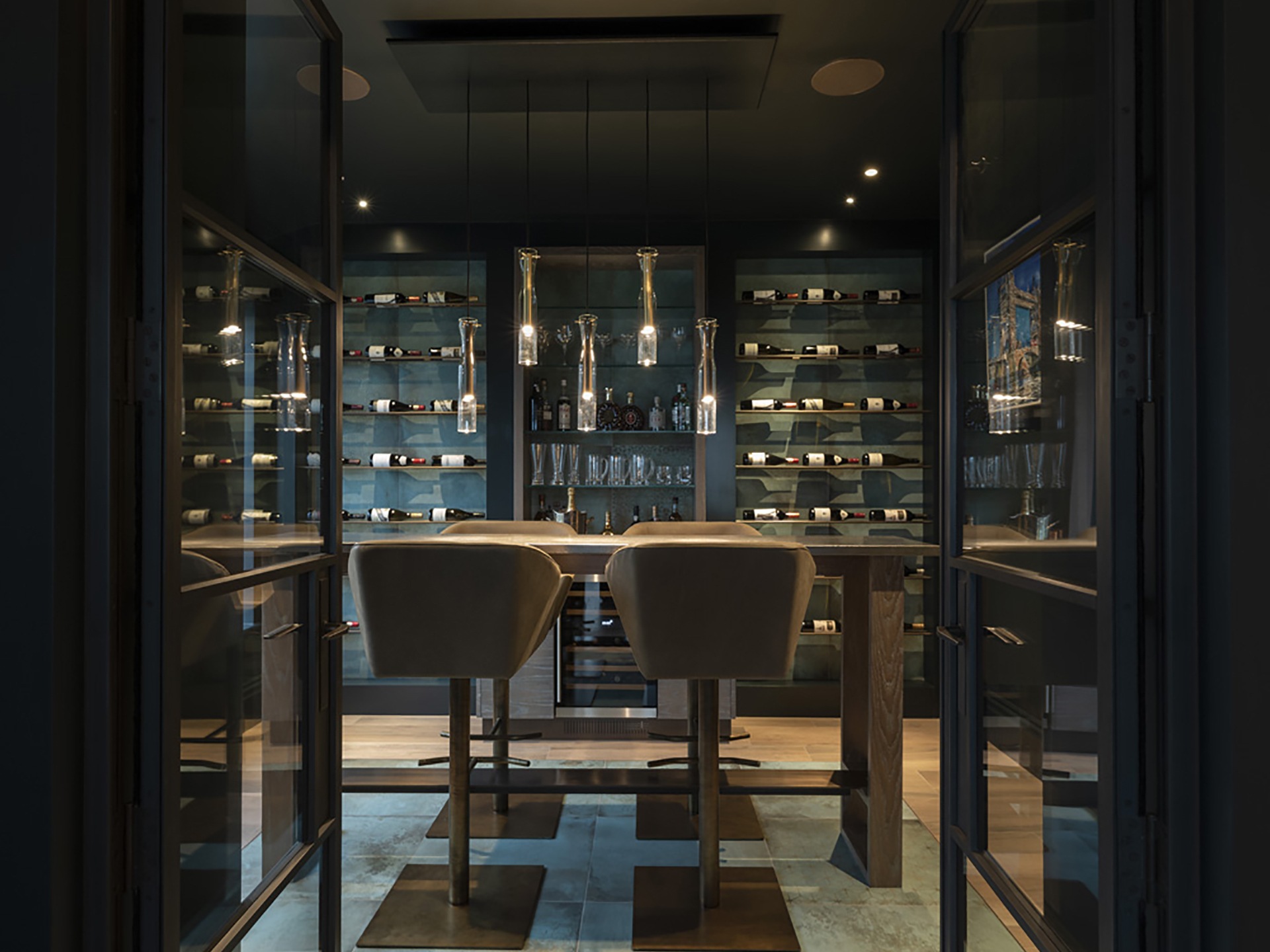
Image credit: Architectural Bronze Casements
Wine coolers
Bespoke kitchen designer Tom Howley says, “If space is an issue, there are so many fantastic appliances on the market today that provide wine storage in your kitchen and sit well within a kitchen design. Sub-Zero & Wolf and Fisher & Paykel, for example, have a large range of high-end wine coolers that benefit from clever features such as zoned temperature, light protection, lockable doors and adjustable shelving to accommodate bottles of all shapes and sizes, from dessert wines to magnums of Champagne.”
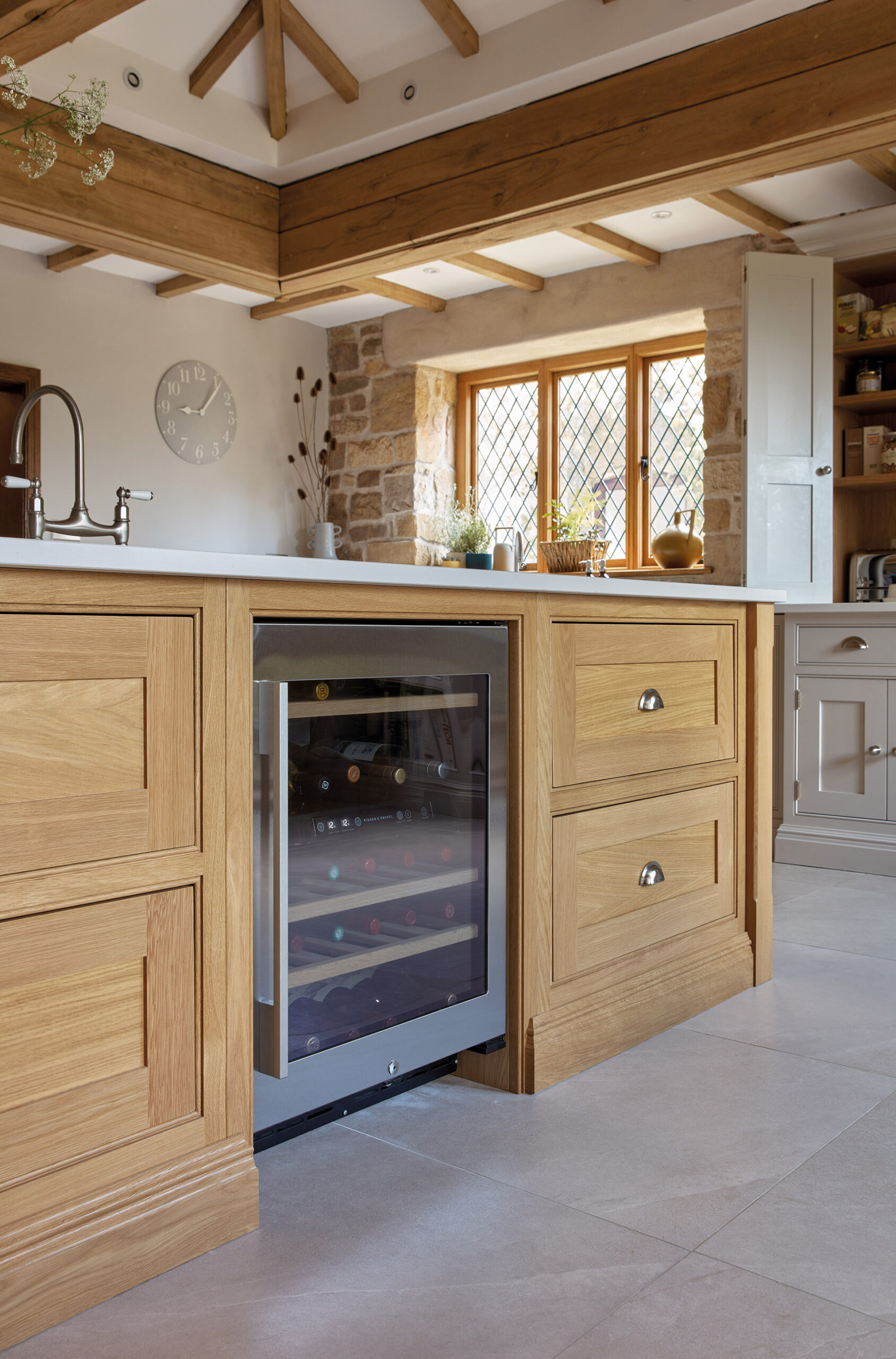
Image credit: Tom Howley
As he says, wine coolers, such as those also made by Haier and Pando, offer dual-temperature zones so you can store red and white wines at different temperatures in a humidity-controlled environment. Full-length and undercounter, freestanding and built-in versions are all available. Some models have doors that you can match to the rest of your kitchen. Some require space to allow for ventilation. They are sized according to the number of bottles they store. A wine cooler could be the best option if you don’t have a large wine collection – or budget – but appreciate keeping a few bottles of good wine well.
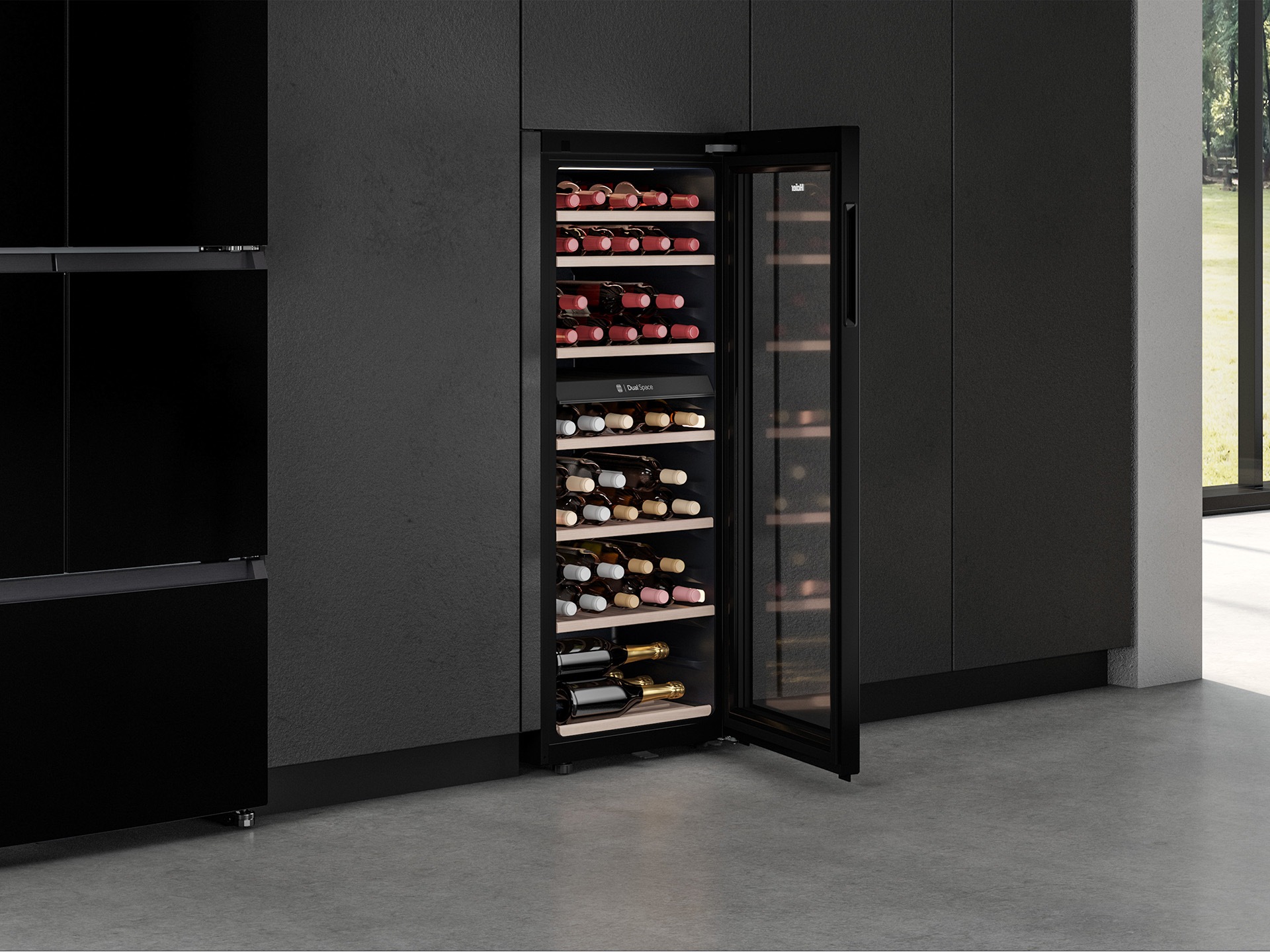
Image credit: Haier
Wine worth storing
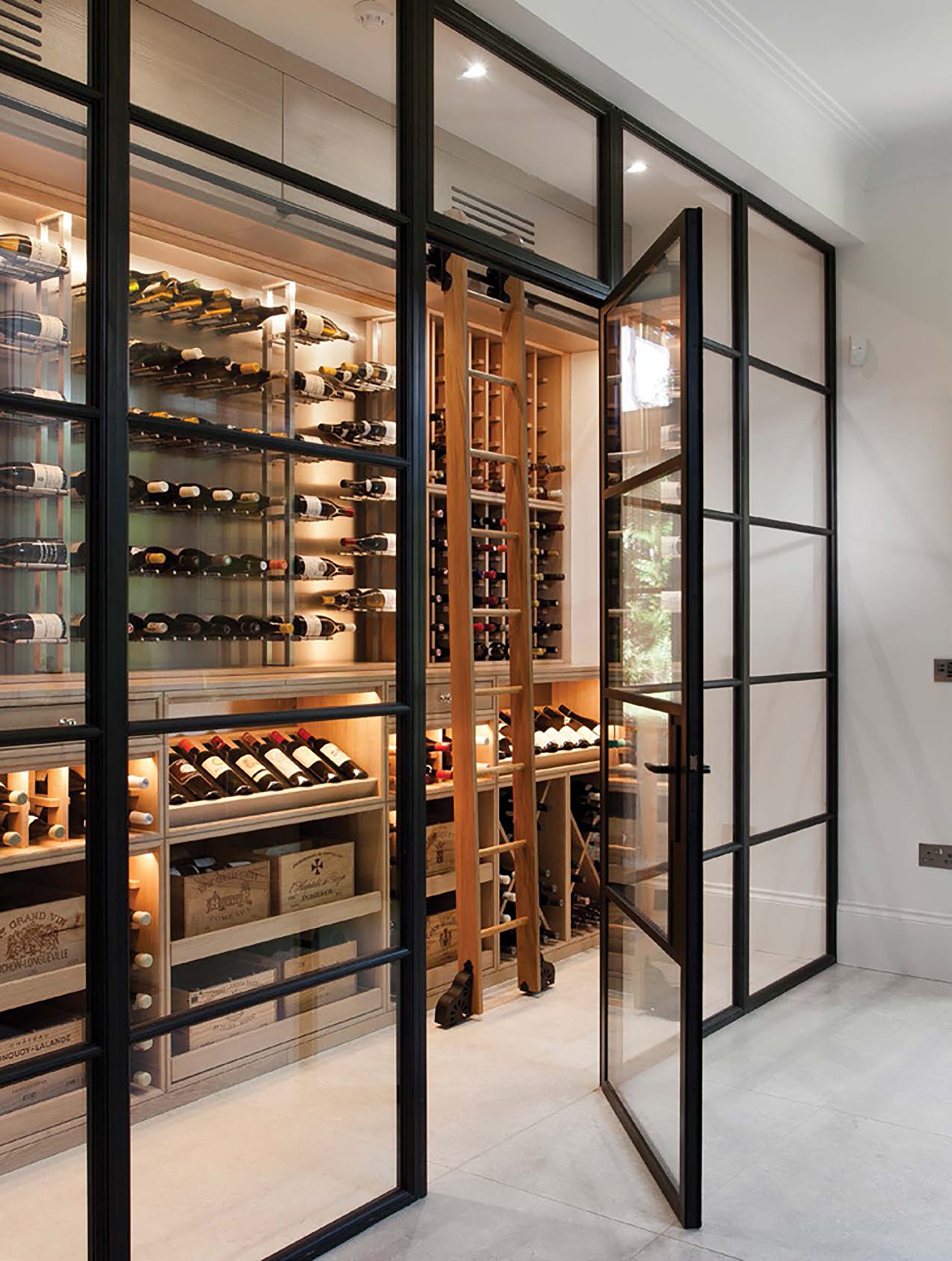
Image credit: Architectural Bronze Casements
Richard Lane points to an important consideration: the quality of the wine you’re looking to store. Basically, it’s only worth ageing good quality wine. He says, “A key consideration is whether there is a need for cellaring or storage. This is only the case for higher-quality wines with concentrated primary fruit, which have the potential to age well in bottles over many years.
“In general, premium red wines will age longer, especially if they are high in tannins. These will soften with bottle age, as the primary flavours develop more complex tertiary notes (eg dried fruit, leather, earth). While top Chardonnays and Rieslings can age well too, many white wines are likely to be best consumed young, with some styles – think fruity Sauvignon Blanc – being at their best at their youngest. There’s no benefit from cellaring these at all.”
Florence Fagan, of Les Grands Chais de France, advises, “When it comes to whether you should keep your wines in a cellar and how long for, so much depends on your personal tastes, as well as on the wine. For example, Pinot Noirs, such as Maison François Martenot Bourgogne Pinot Noir, can be drunk very young. If you like them easy to drink and fruity, I would advise you drink them within three years to enjoy the freshness and red fruit aromas. Conversely, Pinot Noir wines can also gain some complexity with age. So, if a more sophisticated wine is what you are looking for, I would recommend ageing wines such as Moilllard-Thomas Santenay for three to seven years to allow the tannins to become silkier and the perfume to develop aromas of spices and wood.”
Final word goes to Richard Lane: “A wine cellar can make a wonderful household addition, assuming the ideal storage conditions are met. Just make sure you have the right wine to store it there in the first place.”

